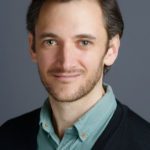Présentation
M. pneumoniae is the causative agent of atypical pneumonia and other extra-pulmonary pathologies in human. Its small genome size (816 Kbp) and the large repertoire of existing resources about it make this bacterium an ideal model to engineer a therapy chassis. M. pneumoniae has the following advantages: i) It is a mild pathogen that is not life-threatening and can be successfully treated with antibiotics; ii) It has a “simple” metabolic and genetic network, which reduces the risk of unwanted interference of the engineered network. We have quantitative data on the majority of its metabolites as well as a flux-balance model; iii) It does not have cell wall and therefore does not trigger a strong inflammatory response; iv) It has a low rate of recombination with a reduced risk of horizontal transfer to other organisms, as it uses the stop codon UGA to encode for tryptophan; v) Its main antigens and virulence factors have been well characterized; vi) M. pneumoniae can be grown in a defined synthetic serum-free medium (although poorly compared to rich medium); vii) We have also recently sequenced 22 pathogenic strains to determine gene variability and pathogenic genes in the infection process. Comparison of variability with in vitro essentiality identifies possible unknown virulence factors; viii) It is one of the bacteria for which more quantitative and extensive datasets have been obtained. Work from our group has resulted in comprehensive quantitative datasets for its transcriptome, metabolome, proteome, phospho- and lys-acetyl-proteome, and DNA methylome. A comprehensive mini-transposon mutant library obtained by “haystack mutagenesis” has been established, and a full essentiality analysis of all its chromosome elements has been performed (Lluch et al., 2014; submitted). Regarding transcription, we have ChIP-seq data for more than 200 proteins, and we have more than 300 gene-expression perturbation assays that have been analyzed by microarrays, tiling arrays, and deep sequencing. We have a preliminary 3D structure of its chromosome at less than 8000-base resolution, and we are progressing to 1000-base resolution that will allow us to link chromosome structure with transcription regulation. We know the RNA and protein copy numbers, as well as their half-lives; ix) Finally, we have a whole cell model based of the related bacterium M. genitalium that could be used as a basis for constructing a M. pneumoniae model for cell engineering. To develop this whole-cell model, we are producing new targeted data that will be integrated with existing knowledge. In parallel we are developing the tools for generating the non-pathogenic chassis on which we will build antigenic determinants. Here I will discuss the problems associated with building a whole cell model that could be used for engineering, as well as the progress and preliminary data showing the possibilities of using M. pneumoniae as a therapeutic agent.

